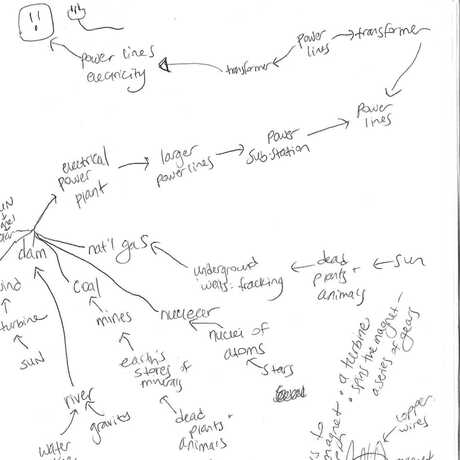
Mapping can help make an abstract concept come to life, like the rock cycle or a complex food web. Mapping can also help students name parts of a system and their interactions, like the different parts of the human digestive system or how electricity gets from the power plant to the outlet in a home. Making these processes visual can help students surface their ideas and make meaning out of phenomena that are difficult to observe.
Below, you’ll find guidance on a few ways mapping can help your students understand scientific concepts, including:
- Story Mapping
- Diagramming
- An example from a real classroom
Because we know teachers appreciate seeing the results of using these strategies, we've also created an example gallery containing student work.







